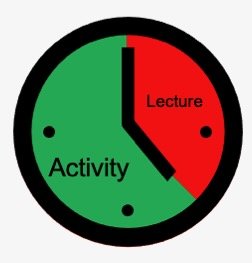Drive Learning with Activities, Not Lectures
If you attended my Sure-Fire Demonstration presentation at GOSH 2025, what do you remember about it? I’m betting it isn’t what I said. It’s the activities you did.
Activities are powerful teaching methods. It’s how most of us humans are built to learn. When you incorporate them in your training, you create “AHA” moments that drive meaningful behavior changes.
Why Do Activities Work Better than Lectures?
Lecturing overwhelms the brain. And when that happens, trainees tune out. They may know that what you’re teaching is important, but you’re trying to stuff their heads with too much information, too quickly, and they can’t keep up.
Activities allow people to learn at a more comfortable pace. They engage different modes such as touch, smell, hearing, talking, and sight. And they often add a kinesthetic component that dramatically boosts retention.
OSHA Agrees
OSHA 3824 recommends that training class time be two-thirds activity and one-third lecture. That means for every hour of class time, you should be doing 40 minutes of activity and 20 minutes of lecture.
How do your safety training sessions compare to this standard? Be honest. Are you relying too much on Powerpoint?
My Proven Method for Activity-Based Safety Training
Over the years, I’ve added more and more activities to my own trainings. Today, my classes are a series of activities strung together with short explanations of the skill being learned and how to perform the activity.
This method consistently gets spectacular results with high engagement, far more actual learning, and five-star class evaluations.
How to Add Activities to Your Trainings
Get off to a fast start. Get people into that first activity as quickly as you can.
Break people into groups that allow for more interaction.
Check in three times:
First Check: Right after the exercise starts, make sure each group is doing the activity correctly.
Second Check: Halfway through, assess each group’s progress. Make adjustments and suggest changes if needed.
Third Check: Near the end, poll people on what they’ve learned and direct them to wrap up.
Take notes. As you visit the groups, write down things to bring up during the post-activity debrief (See #5.)
Debrief. When the class becomes back together, ask them what they learned. Get the ball rolling by using your notes, such as: “Team A had some pretty spirited debate when they were determining the severity of the hazard. Can someone from Team A tell us about it?” Or “Bob, you made a great comment when Marla was adjusting your safety harness. Would you please share that with the group?” Let the trainees do the talking! Don’t steal their thunder by saying it for them. Learning from peers is powerful medicine.
Activities Are More Work, But They Pay Off Big
I know. Activities take more effort to plan and run than doing a Powerpoint lecture. But your time is valuable! Don’t throw it away by using lecture-style training that people won’t remember and you’ll have to repeat.
Activities are effective. OSHA says so. Brain science says so. And I say so, based on decades of experience as a knowledge transfer expert. Try it and let me know how it goes.


